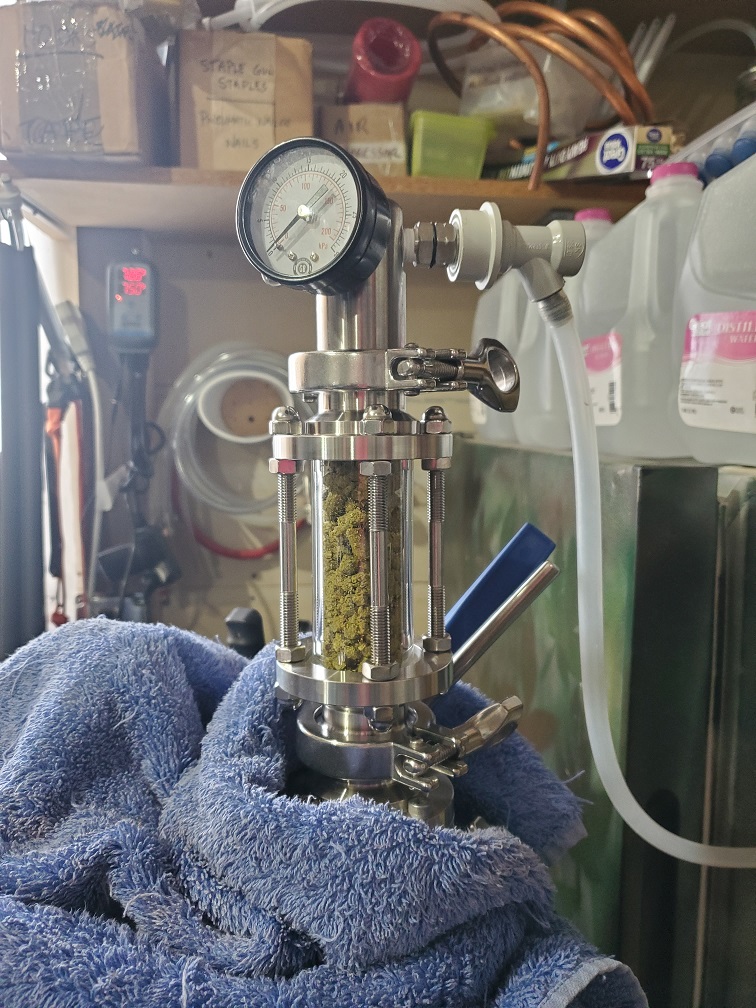When the bubbling slows down you can swap the barb for the pressure manifold. That'll be after 2 or 3 days, likely.
Maybe dry hopping is best left for a future batch. I'm fermenting a pale ale right now, and I do dry hopping by using a sight glass and butterfly valve on the top TC connection:
View attachment 661708
I use a Tilt hydrometer to monitor this, but you could use the sample valve to pull off a couple samples to see where you are. I close up the fermenter with about 7 points of gravity to go so it self carbs, and at that point I'll drop the hops. I can get 3 ounces of hops in there.
When done, and after I crash, I'll have the beer at about 7psi. I'll rack to a keg (pushing with CO2), and then finish the carbing with set and forget.
I have kegged in as short a time as a week, otherwise more typically 2 weeks, so there's still some conditioning to be done. Thus, set-and-forget works just fine.
About kegging in a week: the last time I brewed the beer I'm fermenting now was December 8th; I kegged that beer in, I think, 8 days. That beer, BTW, was gone on January 8th. So I'm brewing it again. Probably won't last more than 3 or 4 weeks either.

Here's the TILT log. There's a little flakiness in the SG readings as I've been trying to get it to warm up in my cold garage. I'm using Kveik yeast, Omega's Hothead, so the temp is just fine. I wanted it higher but even with supplemental heat and covering the fermenter with a moving blanket, about 72.5 degrees is as much as I can get.
https://docs.google.com/spreadsheets/d/11jKVDhIGjYGKRDnIyqXUP8xEiBGdgHFRSJBxO6zYcN0/htmlview#







